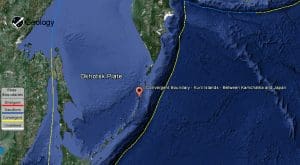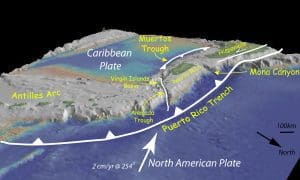
In this article, we will embark on a mesmerizing journey into the depths of the Earth’s oceans. The vast expanses of the world’s oceans hold many mysteries, and one of the most awe-inspiring aspects is their incredible depth. From the mysterious depths of the Mariana Trench in the Pacific to the enigmatic Sunda Trench in the Indian Ocean, we will explore some of the deepest oceanic trenches on our planet.
Join us as we delve into the wonders of these deep-sea realms, uncovering the unique ecosystems that thrive under immense pressure and darkness. Discover the intriguing geological formations and the fascinating marine life that call these abyssal zones their home. As we venture into these uncharted territories, we’ll also shed light on the crucial role these deep oceans play in shaping the Earth’s climate and the delicate balance of the global ecosystem.
So, fasten your seatbelts and get ready for an unforgettable voyage into “The Deepest Oceans in the World” as we unravel the secrets hidden beneath the waves. Let’s dive in!
Contents
The Mariana Trench: The Challenger Abyss.🐟
The Mariana Trench, located in the western Pacific Ocean, is a place of mystery and fascination for scientists and explorers alike. It is known for its extreme depths and unique geological features, making it one of the most remarkable and challenging places on Earth to explore. At the heart of the Mariana Trench lies the Challenger Abyss, the deepest point on the planet, shrouded in darkness and veiled in secrecy.
Description of the Mariana Trench:
The Mariana Trench is a crescent-shaped trench situated in the western Pacific Ocean, to the east of the Mariana Islands. It stretches over 1,550 miles (2,500 kilometers) and reaches a width of approximately 43 miles (69 kilometers). The trench is a result of the complex interaction between tectonic plates, where the Pacific Plate is forced beneath the Mariana Plate, leading to the formation of this colossal geological marvel.
Depth of the Challenger Abyss:
The Challenger Abyss, located within the Mariana Trench, holds the record for being the deepest point in the world’s oceans. It was named after the HMS Challenger, a British research vessel that first plumbed the depths of the trench in 1875. The depth of the Challenger Abyss is estimated to be around 36,070 feet (10,994 meters) below sea level, a depth that exceeds the height of Mount Everest, the highest peak on Earth.
Unique Characteristics and Scientific Challenges:
Exploring the Challenger Abyss presents scientists with numerous challenges due to its extreme conditions. The pressure at the bottom of the trench reaches an astounding 1,086 bar, equivalent to around 16,000 pounds per square inch, which is over a thousand times greater than the atmospheric pressure at sea level. This immense pressure makes it incredibly difficult for researchers to design equipment that can withstand the extreme conditions of the abyss.
Furthermore, the perpetual darkness at these depths creates an environment where only a few extraordinary life forms can survive. Organisms here have adapted to the harsh conditions, including extreme cold and the absence of sunlight. The study of these unique life forms holds invaluable insights into the potential for life in other extreme environments in our universe.
The Kuril Trench: Marvel in the North Pacific.🐟
Nestled in the vast expanse of the North Pacific Ocean, the Kuril Trench is a captivating marvel that has long fascinated oceanographers and marine scientists. Stretching along the Kuril Islands, this trench is an oceanic trench of great significance, boasting unique geological features and hosting a diverse array of marine life. Join us as we embark on an exploration of the Kuril Trench, uncovering its remarkable depths and the ecological wonders it holds.
Depth and Unique Geology:
The Kuril Trench extends approximately 1,800 kilometers (1,118 miles) along the eastern edge of the Kuril Islands and is one of the deepest oceanic trenches on the planet. It reaches an astounding depth of around 10,542 meters (34,580 feet) below sea level, making it a site of profound geological interest. This depth is a result of the subduction zone where the Pacific Plate is being pushed beneath the Okhotsk Plate, leading to the formation of this deep trench.
The geology of the Kuril Trench is characterized by its steep walls and abyssal plains, showcasing the immense forces at play in shaping the Earth’s crust. The trench’s rugged terrain and the dynamic tectonic processes contribute to its distinctiveness and scientific significance.
Importance for Biodiversity and Marine Ecosystems:
The Kuril Trench plays a vital role in fostering biodiversity and supporting unique marine ecosystems. The deep, cold waters of the trench create a rich and diverse habitat for a wide range of marine species. The nutrient-rich waters that well up from the trench’s depths attract a variety of marine organisms, from plankton and small fish to large predators.
One of the key aspects of the trench’s importance lies in its contribution to the productivity of marine life in the surrounding areas. The nutrient upwelling enhances food availability, creating a feeding ground for various marine species. This, in turn, sustains the populations of larger marine predators, including whales, sharks, and seabirds, which rely on these abundant resources for their survival.
The Sunda Trench: Enigma in the Indian Ocean.🐟
Nestled beneath the shimmering waters of the Indian Ocean, the Sunda Trench has long captivated the curiosity of scientists and oceanographers. Situated off the coast of Indonesia, this trench is a captivating enigma with its unique features and mysterious depths. In this exploration, we delve into the secrets of the Sunda Trench, shedding light on its intriguing characteristics and the scientific investigations that have unraveled its mysteries.
Description of the Sunda Trench:
The Sunda Trench is a deep oceanic trench located in the northeastern Indian Ocean, off the coast of Sumatra and Java islands in Indonesia. Stretching over 2,600 kilometers (1,615 miles), the trench is part of the tectonic subduction zone where the Indo-Australian Plate is being forced beneath the Eurasian Plate. This process has given rise to the formation of this deep and fascinating underwater feature.
Depth and Comparison with Other Oceanic Trenches:
The depths of the Sunda Trench are nothing short of astonishing. Plummeting to an approximate depth of 7,725 meters (25,344 feet) below sea level, it ranks among the deepest oceanic trenches on Earth. To put it into perspective, its depth is comparable to the height of several renowned mountains, such as Mount Kilimanjaro, the highest peak in Africa.
While the Sunda Trench is not as deep as the famous Mariana Trench, it still holds its own in terms of geologic importance and scientific intrigue. Its unique geological setting and proximity to active tectonic plate boundaries make it a crucial site for studying subduction processes and their impacts on the Earth’s crust.
Scientific Research and Interesting Discoveries:
The Sunda Trench has been the focus of several scientific expeditions aimed at understanding the complexities of subduction zones and the geological forces at play. Researchers have used advanced technologies, such as deep-sea submersibles and remotely operated vehicles, to explore its depths and collect valuable data.
Among the most intriguing discoveries is the identification of deep-sea hydrothermal vents in the trench. These vents are volcanic features that spew out mineral-rich, superheated water, creating unique ecosystems that support a diverse range of life forms.
The Puerto Rico Trench: Treasure of the Caribbean.🐟
Nestled in the azure waters of the Caribbean Sea, the Puerto Rico Trench is a hidden treasure waiting to be explored. Situated just north of the island of Puerto Rico, this oceanic trench is a place of wonder, boasting unique geographical features and captivating depths. In this journey of discovery, we unravel the secrets of the Puerto Rico Trench, shedding light on its intriguing characteristics and its connection to seismic activity and the formation of earthquakes.

Description of the Puerto Rico Trench:
The Puerto Rico Trench is an elongated and deep trench located in the northeastern Caribbean Sea. It stretches approximately 800 kilometers (500 miles) and runs parallel to the northern coast of Puerto Rico. The trench is formed by the subduction of the North American Plate beneath the Caribbean Plate. This geological process has led to the creation of this trench, making it one of the most significant subduction zones in the Atlantic Ocean.
Depth and Geographical Peculiarities:
The depths of the Puerto Rico Trench are awe-inspiring. Plummeting to approximately 8,648 meters (28,373 feet) below sea level, it ranks among the deepest oceanic trenches in the world. This extraordinary depth is a result of the massive forces at play where the tectonic plates interact, leading to the formation of this trench.
Geographically, the trench is characterized by its steep slopes and rugged terrain. The northern boundary of the trench is marked by a prominent fault line, known as the Puerto Rico Trench Fault Zone, where the North American Plate grinds against the Caribbean Plate. This dynamic geological setting contributes to the trench’s exceptional depths and seismic activity.
Relation to Seismic Activity and Earthquake Formation:
The Puerto Rico Trench is closely linked to seismic activity in the region and has a significant impact on the formation of earthquakes and tsunamis. The process of subduction involves one tectonic plate being pushed beneath another, leading to intense pressure and stress along the fault line. As the plates continue to move, the built-up stress is released in the form of earthquakes.
This trench is part of the seismically active “Ring of Fire,” an area around the Pacific Ocean known for frequent earthquakes and volcanic eruptions. The subduction of the North American Plate beneath the Caribbean Plate generates powerful seismic events that can be felt throughout the Caribbean region.
The Importance of the Deep Oceans.🐟
The deep oceans, often referred to as the “oceanic abyss,” hold immense significance for our planet’s health and well-being. These mysterious and vast expanses play a crucial role in regulating the Earth’s climate, carbon cycle, and supporting diverse ecosystems.
Climate Regulation:
The deep oceans act as a massive heat sink, absorbing and storing vast amounts of heat from the atmosphere. This process helps regulate global temperatures, preventing extreme fluctuations and providing a stable climate for life on Earth. The oceans also play a vital role in the distribution of heat through ocean currents, influencing weather patterns and climates around the world.
Carbon Sequestration:
Deep oceans are crucial in mitigating the impact of greenhouse gases, particularly carbon dioxide, on the atmosphere. They serve as significant carbon sinks, absorbing a substantial portion of the carbon dioxide emitted by human activities. This sequestration process helps reduce the rate of climate change by preventing excessive accumulation of greenhouse gases in the atmosphere.
Biodiversity and Ecosystems:
The depths of the oceans host a wide range of unique and often undiscovered life forms. From mysterious deep-sea creatures to vibrant coral reefs, these ecosystems support an incredible diversity of marine species. Preserving these ecosystems is essential for maintaining ecological balance, as many marine species play vital roles in nutrient cycling and sustaining other species.
Scientific Exploration and Knowledge:
Studying the deep oceans is a frontier of scientific exploration, where researchers continually make groundbreaking discoveries. From understanding the geology of subduction zones to uncovering new life forms adapted to extreme conditions, exploring these deep realms expands our knowledge of the planet’s history and the potential for life beyond Earth.
Conservation and Stewardship:
Recognizing the importance of the deep oceans prompts a greater sense of responsibility to protect and preserve these delicate environments. As human activities impact the oceans, including overfishing, pollution, and climate change, understanding the significance of the deep oceans encourages us to take proactive measures to ensure their sustainability for future generations.


